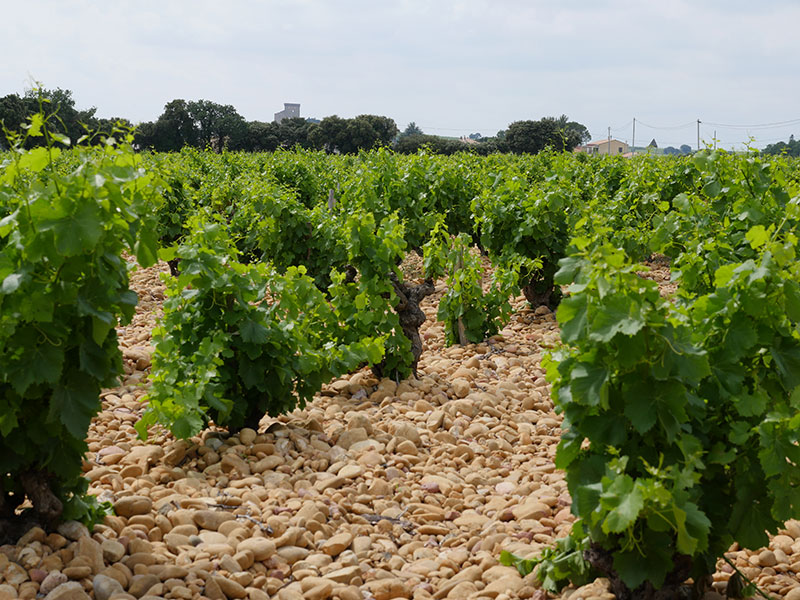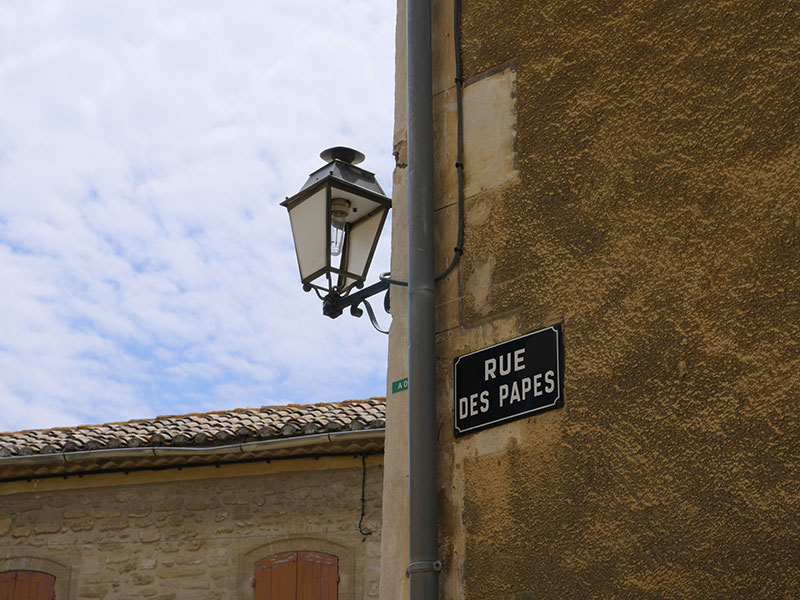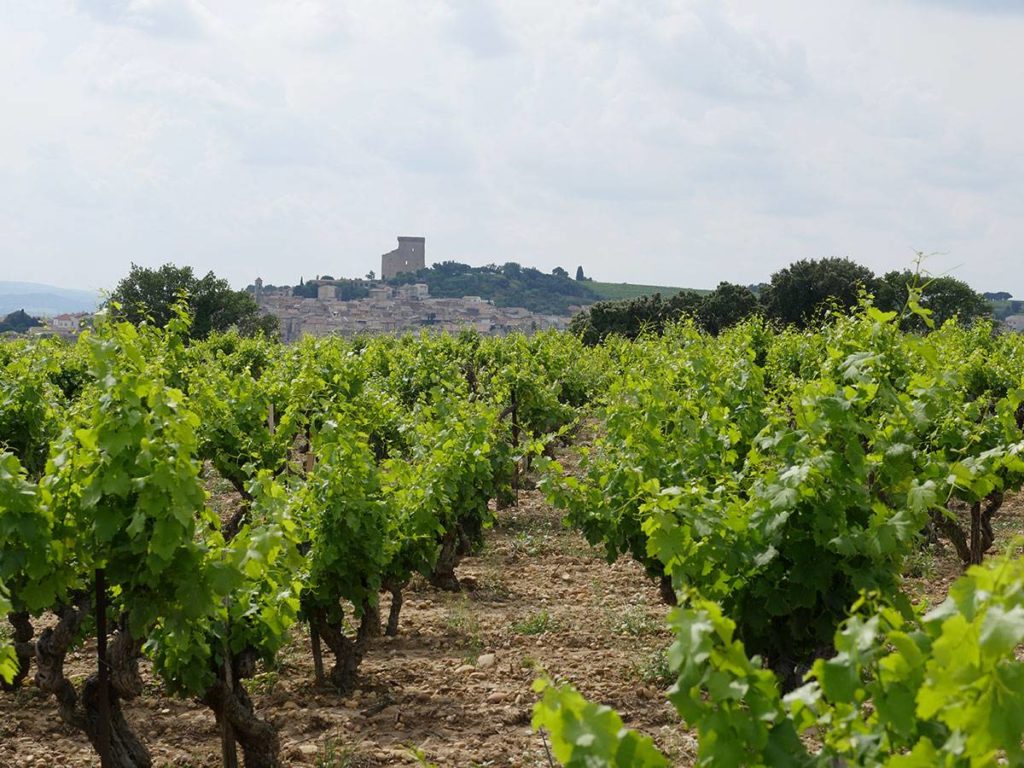The name of the town Châteauneuf du Pape translates to ‘new castle of the Pope’ and the history of the Popes that lived in it along with those that stayed in Avignon are closely related to the wines of the region. Before receiving its current name wines from the region were named ‘Vin du Pape’ (Pope’s Wine) with John XXII as its main driving force; the same pope that ordered the construction of the castle on top of the town’s hill.
Although the importance of Avignon, Châteauneuf du Pape and the surrounding area declined after the Popes moved out, wine still remained a substantial produce with a relatively high number of citizens owning a small parcel of grapevines. During the 18th and 19th Centuries Châteauneuf du Pape wines grew in popularity and gained a reputation for their excellent quality which some describe as having the best of both the Languedoc, and Bordeaux characters.
After the Phylloxera epidemic that devastated European vineyards in the second half of the 18th Century, production in the area dropped sharply and many producers left. At that time the wine produced was sold very cheaply and replanting was too expensive. It took almost a century for the region to flourish once again.
The appellation was officially recognised in 1936 bringing strict rules over grape varieties, boundaries, yield and harvesting methods (only manual harvesting is permitted). One of the most unmistakable features of Châteauneuf du Pape terroir is the pebbles (galets roulés in French) which are thought to keep the moisture of the soil from evaporating too easily and absorb the heat during the day and radiate it during the cooler nights.


The soil is a mixture of rocks, sand, limestone and clay. Depending on the abundance of these materials in the composition of the soil, the resulting wine will possess different characteristics. The climate in this part of the Rhône river is strongly influenced by the Mediterranean Sea, meaning hotter and drier summers, and milder winters. Châteauneuf du Pape is one of the sunniest and driest wine regions in France and one of the most consistent therefore bad vintages are rare.
The Mistral wind has an important role ensuring good growing conditions on the land. This northerly wind, which can blow at very high speeds for several days at a time, keeps the humidity levels low and protects the vines from dreaded fungal infections. Thanks to this, many winemakers have been opting for biodynamic and organic farming techniques.
Vines in Châteauneuf du Pape are claimed to be some of the oldest in France with lots of parcels growing 100+ year-old plants, mainly Grenache varieties which represent the backbone of its wines. They are almost solely made up of blends where the other accepted varieties, in particular, Syrah, Mourvèdre and Cinsault, usually make up smaller proportions. Although there are many rules Châteauneuf du Pape wineries must follow, when it comes to blending, producers still find room for experimentation with some of them making varietals from Grenache and others omitting this variety in the blend altogether.
The use of wood is also optional and one can easily find winemakers that use new oak barrels to impart additional flavours and body although it’s always done in a way that doesn’t obscure the fruity notes of the wine. Most producers seem to have a strong opinion on this matter and most of them prefer not to use new oak as this is not considered the traditional way. Nonetheless the myriad of styles found in the region will definitely satisfy the taste of most wine lovers.
Something that is commonly found in many wineries is the production of special cuvées which use the best grapes usually grown in the best parcels and from old vines. They taste delicious when still young although most of them will have the ability to age well too. Younger wines need decanting to open up their flavours and soften, whilst older wines won’t necessarily benefit from it except when it comes to removing the sediment.
Most of the wines are meant to be drunk between 3-10 years from their vintage. The style will vary depending on the winemaker but one will usually find red fruit, especially cherries and raspberries, but also blackberries and blueberries. On the herbaceous side, Mediterranean scrub and peppery notes are common. The content of alcohol rarely goes below the 14.5% mark which gives the wine its body and punch.






